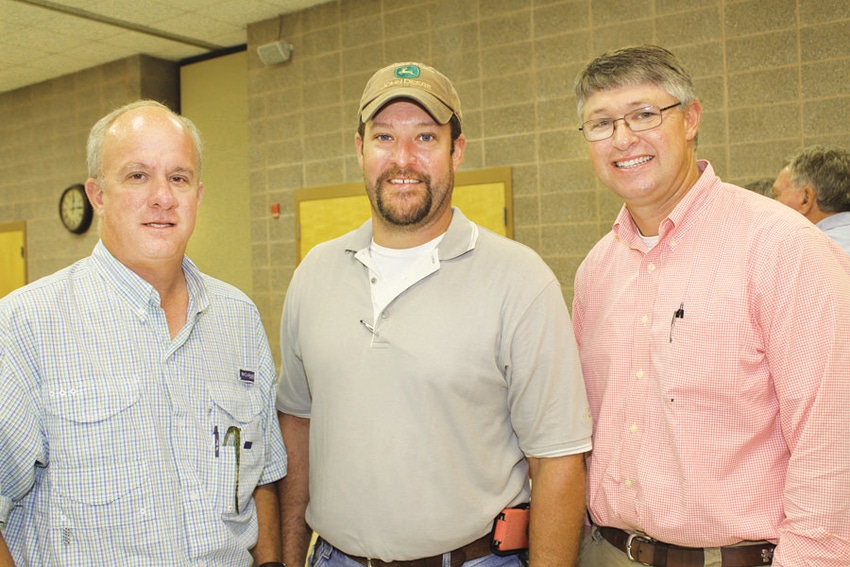
“I would be a bit more aggressive than usual with insecticide applications in order to protect early fruit set," says Darrin Dodds, Extension associate professor of plant and soil sciences at Mississippi State University. "The problem this year is that there may not be time to mature a lot of the bolls in upper and outer fruiting positions. We need to do everything we can to protect bolls on lower fruiting positions at nodes 5, 6, 7, and 8.”

With Mississippi cotton from two weeks to four weeks behind average, it’s important that growers stay on top of the crop’s needs, says Darrin Dodds — and hope for an extended, hot fall season.

DARRIN DODDS
“I’m keeping my fingers crossed that we don’t have a repeat of last year, when August and September were a lot cooler than normal,” he said at the joint annual meeting of the Mississippi Boll Weevil Management Corporation and the Mississippi Farm Bureau’s Cotton Policy Committee.
“The difference is that last year the crop was two to four weeks ahead of schedule because of an unusually warm spring and early planting, so when the cool fall came along it had accumulated enough heat units to compensate.
“This year, we’re really going to need normal August/September heat to carry this late crop to maturity, and a favorable fall to get it out of the field.”
Given the shortened growing season, says Dodds, associate Extension professor of plant and soil sciences at Mississippi State University, growers need to be vigilant with their insect control and plant growth regulator applications.
“I would be a bit more aggressive than usual with insecticide applications in order to protect early fruit set. In a normal growing season, cotton has the ability to compensate pretty well for early season loss. The problem this year is that there may not be time to mature a lot of the bolls in those upper and outer fruiting positions.
“We need to do everything we can to protect bolls on lower fruiting positions at nodes 5, 6, 7, and 8.”
For the third year in a row, Dodds says, many growers have been been battling thrips. “This spring has certainly been a challenging time for this pest. We have a graduate student working on thrips issues, looking at various seed treatments, pre-herbicides, planting dates, soil types — anything we think that will be useful in trying to get a handle on helping growers to better deal with this pest.
“Cotton isn’t an inexpensive crop, and if you have to make two or three applications for thrips on top of everything else, it adds to the cost of your crop. We’re trying to find some ways to address that.”
Plant bugs have started moving into cotton, he says, and growers and consultants should monitor them closely. “On some of our plots at Mississippi State University, we had already sprayed twice prior to bloom. That’s very rare; typically, we’ll spray two or three times during an entire season.”
With hot, dry weather, Dodds notes, it’s important to be aware of how different varieties react to plant growth regulators.
“There are vast differences in the aggressiveness of growth between varieties. If you make a PGR application to some of these varieties when they’re struggling in hot, dry weather, you can hurt yourself. It’s important to be aware of the varieties you have and to tailor your PGR programs to fit them.”
Bacterial blight, which has been a problem the past several years, is beginning to show up this season, Dodds says; one instance was recently being reported in Yazoo County.
“Last year, it was sort of a flash in the pan, and we didn’t see a lot of yield loss. But, growers should keep an eye out for it this year. There is an ongoing effort by Tom Allen and some of his colleagues at the Delta Research and Extension Center to find ways to more rapidly screen for this disease.”
Herbicide-resistant pigweed is “an issue that’s not going to go away,” Dodds says. “A lot of residual herbicides are being applied, and a lot of Liberty is being used. A word of caution: Be judicious in your use of Liberty. If we should lose the effectiveness of this chemistry because of resistance in cotton, or soybeans, we would be left with not very many options.”
New phenoxy-type products that are coming along — 2,4-D-tolerant and dicamba-tolerant cottons — will offer additional options to growers, he says.
“I’ve been working with Dan Reynolds, Jason Bond, Tom Eubank, and others, to get a better handle on issues such as spray tips, how to manage drift, how to keep materials on target, etc.”
About the Author(s)
You May Also Like



